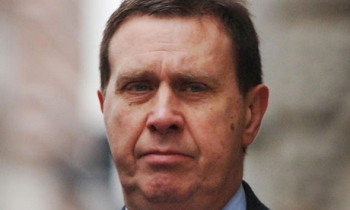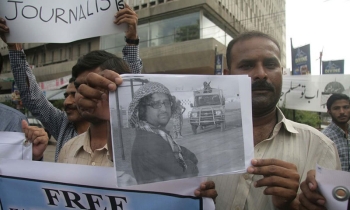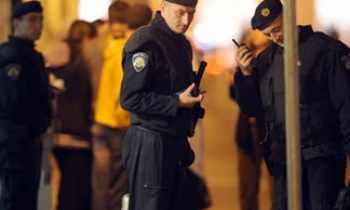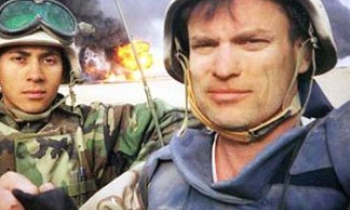Which American newspaper greeted Hitler’s diplomatic victory at Munich with a recommendation that the world place its hopes in the Kellogg Briand Peace Pact? And when, in 1940, the great Jewish journalist and Zionist prophet Vladimir Jabotinsky gave his famous speech in New York calling for an emergency rescue to take the 6 million Jews of Europe to Palestine before they were killed, which newspaper ran a long denunciation of the idea, signed by its editor? And, once the Nazis’ destruction of European Jewry was under way, which newspaper made it a policy to keep the particulars off the front page?
The answer to the first question is the newspaper that, during the cold war, turned out to have taken most deeply to heart the lesson of the appeasement of the Nazis, The Wall Street Journal. The answer to the second question is the newspaper that, once the killing began, cried out most passionately about the Holocaust, the Jewish Daily Forward. And the answer to the third is the newspaper that may well have carried more stories on the Holocaust than any other English-language daily, The New York Times.
In other words, Hitler’s war against the Jews confounded a lot of newspapers, a point to keep in mind when reading Laurel Leff’s Buried by the Times: The Holocaust and America’s Most Important Newspaper. Leff, a former reporter at The Wall Street Journal who is now a professor at Northeastern University, reckons the Times’s default is worthy of an extended study because it was the leading newspaper of its day and because its defaults stemmed from the views – the inner conflicts, even – of its publisher, Arthur Hays Sulzberger. Her account is a brilliant history, one whose insights offer much for editors to think about today when a new war is under way in which an Islamist foe seeks the destruction of the state in which the remnant of European Jewry found redemption.
Leff opens her story on March 2, 1944, when The New York Times issued, on page four, amid thirteen other stories, a five-paragraph item from London about a decision of the Commons to appropriate 50,000 pounds to help fund the Inter-Governmental Committee on Refugees. The story quoted a Labor member reading a report from the Jewish National Committee "operating somewhere in Poland" saying: "Last month we still reckoned the number of Jews in the whole territory of Poland as from 250,000 to 300,000. In a few weeks no more than 50,000 of us will remain. In our last moment before death, the remnants of Polish Jewry appeal for help to the whole world. May this, perhaps our last voice from the abyss, reach the ears of the whole world."
Writes Leff: "The journalists at The New York Times did not respond to that anguished cry – not the London correspondent who filed it, or the cable editor who read it, or the copy reader who edited it, or the night news editor who determined its placement, or the managing editor who signed off on it, or the publisher who had ultimate responsibility for the newspaper in which it appeared.
"One-quarter of a million people were about to die, 3 million were already dead," Leff continues. "Yet, no one at The New York Times said, This is not routine. This is a catastrophe. Perhaps we cannot stop it, but we can lay bare the horror. We can move this story from page four to page one. We can give it a headline that befits the tragedy. We can write a forceful editorial today and tomorrow and the next day.’ But no one at the Times did, not on that day or any of the 2,076 days of the European war."
The failure to heed the last cry from the abyss was but one of hundreds of errors of news judgment the Times made in deciding how to cover the Holocaust and how to play it when it did cover it. It was not as if the publisher of the Times was unaware of the plight of European Jewry. Kristallnacht and a number of other important events did gain front-page display during the course of the escalating depredations. Moreover, Sulzberger himself spent thousands of dollars and no doubt many hours helping members of the European branch of his own family escape from Germany and get resettled, in some instances, in the United States. He did this even while keeping stories about the Jewish nature of the refugee crisis, as it was deemed, out of the pages of the Times.
It turns out – and Leff is just devastating on this point – that the reason the Times failed to front the news about the calamity befalling the Jews of Europe had a lot to do with the reluctance of the publisher to have the Times appear to be a Jewish paper. Sulzberger was bitterly opposed to the idea of a Jewish people-hood. So insistent was he "that the refugee problem not be identified with Jews," writes Leff, that he forced one soon-to-be member of the editorial board to refuse an award from a Jewish organization.
Leff quotes Sulzberger as suggesting that a prospective employee, James G. McDonald, who had been the League of Nations’s high commissioner for refugees, point out that his effort "has been to draw international attention to the fact that this is not a Jewish problem but a general one; that to accord you the honor which they proposed would again contribute to placing the emphasis upon the Jewish side of the question."
At one point, Sulzberger refused to host a dinner for the New School for Social Research, a university of exiled academics, telling a Bloomingdale’s executive, Ira Hirschmann, who had asked him to host the dinner, that he had to "keep myself disassociated from active participation in any movement which springs from the oppression of the Jews in Germany. Only in this way can the unprejudiced and unbiased position of the Times be understood."
If one tries to imagine what it might have been like to be in Sulzberger’s shoes, it is possible, I suppose, to discern that the proprietor of the Times had a noble intent, acting as if to say, "Don’t worry about us, let’s worry about everyone together." But it’s hard to see the result as good journalism. The evidence uncovered by Leff suggests that the publisher of the Times adhered to an ideological view that blinded him to the facts of the catastrophe that was gathering. The news was fit to print, but Sulzberger wasn’t fit to print it.
As the crisis on the continent worsened, the Times also opposed the escape of European Jewry to Palestine. Sulzberger made a trip there in 1937 and loathed the way he was "told by every act, every thought and every gesture, You are one of these people – you are a foreigner in America – here you belong,’" as he wrote in an unpublished essay quoted by Leff. At one point he wrote: "Countries with large Jewish populations must be made to realize that they face only the alternative of living with their Jews, or killing them spiritually or physically."
When the roundups and killings began, the Times was either behind the curve or resisting the truth. When the State Department rejected an offer of the Vichy government to allow foreign Jews to emigrate to the U.S., the Times, Leff writes, defended the U.S. government position, though The Nation and The New Republic, and such journalists as Max Lerner, William Allen White, and Dorothy Thompson, were whaling away on the subject.
The Times had dropped, in 1937, the Jewish Telegraph Agency, the news wire that was to bring in scoop after scoop once the killings began. So on stories like the mass killing of Jews at Babi Yar, which took place in 1941, the Times lagged behind its competitors, like the New York Post and Herald Tribune. It may be that as the toll mounted from the tens of thousands, to the hundreds of thousands, to the millions, the Nazis were always ahead of what those in the civilized world could imagine as a possibility. Leff’s descriptions of the operations of the Times in Europe are illuminating as to how the puzzle came into focus only in pieces.
But by any measure, the Times lagged, and as the killings picked up pace, the feud between the Times’s publisher and the Zionist camp was brought out into the open, and he began to look more and more like a pecksniff. When William Green of the American Federation of Labor gave a speech condemning "the slaughter of hundreds of thousands of Jews in Europe by the Nazi butchers," Leff writes, Sulzberger’s reaction was to write to Arthur Krock, chief of the Times’s Washington bureau. It seems the bureau’s report had made reference to the Jewish people. "I have been trying to instruct the people around here on the subject of the word Jews,’ i.e., that they are neither a race nor a people, etc.," Sulzberger wrote.
The Times opposed the effort of one of the most heroic figures of the war, Peter Bergson, to secure backing in the United States for a Jewish Army. Leff reports that it was one of only two lead editorials on a Jewish issue throughout the entire war. One of the striking elements of the story is that even as it was taking place the Times’s default was recognized. Oswald Garrison Villard, who was not Jewish and was an anti-Zionist, is quoted by Leff as lambasting the Times treatment of the news of European Jews, saying the paper feared its Jewish ownership would be held against it more frequently if it were to become "a vigorous defender of the horribly ill-treated Jewish people . . . ."
Toward the end of his career, all this took a toll on Sulzberger. He fell away from Reform Judaism, the religious stream with which his family had long been affiliated. He ended his membership in the old Spanish-Portuguese synagogue that his forefathers had founded, Leff writes, "because the congregation sang Hatikva," the song that became one of the most hauntingly beautiful of any of the national anthems, and he resigned as a trustee of Temple Emanu-El in New York, though when he died, in 1968, one of the tributes his wife established was the Arthur Hays Sulzberger Scholarship at Hebrew University in Jerusalem.
Reflecting on Leff’s story, I am not so sure that the course struck by Arthur Hays Sulzberger was entirely without at least a consistency of principle. The conflicts he felt were shared by countless other American Jews, and the failures of the Times were echoed by a number of important Jewish institutions. Were he able to return for a visit no doubt he would take some satisfaction in the fact that his own institution stands today while others have fallen in the fray. The importance of Leff’s book is in helping us to understand what happened so that we can be faster on our feet and avoid the same mistakes now that a new war against the Jews is under way and a new generation of newspaper men and women are on the story.
Seth Lipsky, formerly a member of the editorial board of The Wall Street Journal and editor of the Forward, is editor of The New York Sun.









